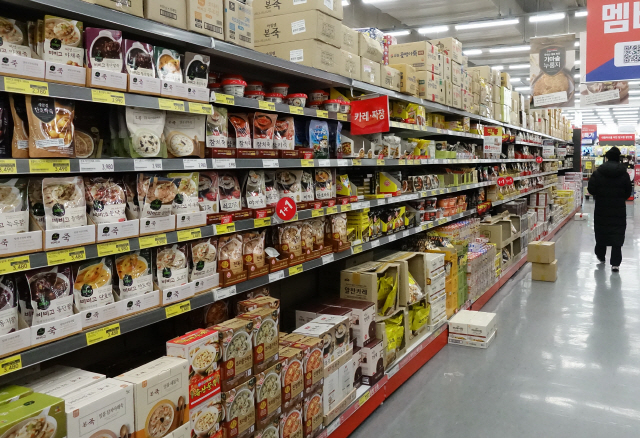
Local retail sales of processed rice products shot up nearly 11 percent in 2019 from a year earlier due to the growing demand from single-member households while more people opt for convenient meals, data showed Thursday.
Retail sales of processed rice products, including ready-to-eat steamed rice, porridge, and noodles, came to 884 billion won ($804 million) in 2019, compared with 797.3 billion won posted in 2018, according to the latest data provided by the Ministry of Agriculture, Food and Rural Affairs.
Of the sales from 2019, ready-to-eat steamed rice accounted for 493.8 billion won, followed by rice cake with 154.2 billion won and porridge with 133.2 billion won.
Discount stores took up 32.5 percent of the sales, followed by convenience stores with 24 percent.
The ministry, which has not yet provided data for 2020, said the sales of such goods are estimated to have further gathered ground through last year as more people refrained from dining out amid the COVID-19 pandemic.
According to its latest online survey carried out on 900 consumers in 2020, the ministry said around 80 percent of South Koreans have purchased a processed rice product over the past three-month period.
Ready-to-eat steamed rice products were especially popular among respondents in their 20s and 30s, it added.
Rice is a key staple food for Koreans, but its consumption has been on a steady decline since 1980. Per capita average annual rice consumption hit a fresh low of 59.2 kilograms in 2019, down 3 percent from a year earlier, according to the data compiled by Statistics Korea.
But the demand for ready-to-eat products has been growing sharply over the past years in sync with the rising number of single-member households. The proportion of single-member households in South Korea surpassed 30 percent of the total for the first time in 2019. (Yonhap)
Retail sales of processed rice products, including ready-to-eat steamed rice, porridge, and noodles, came to 884 billion won ($804 million) in 2019, compared with 797.3 billion won posted in 2018, according to the latest data provided by the Ministry of Agriculture, Food and Rural Affairs.
Of the sales from 2019, ready-to-eat steamed rice accounted for 493.8 billion won, followed by rice cake with 154.2 billion won and porridge with 133.2 billion won.
Discount stores took up 32.5 percent of the sales, followed by convenience stores with 24 percent.
The ministry, which has not yet provided data for 2020, said the sales of such goods are estimated to have further gathered ground through last year as more people refrained from dining out amid the COVID-19 pandemic.
According to its latest online survey carried out on 900 consumers in 2020, the ministry said around 80 percent of South Koreans have purchased a processed rice product over the past three-month period.
Ready-to-eat steamed rice products were especially popular among respondents in their 20s and 30s, it added.
Rice is a key staple food for Koreans, but its consumption has been on a steady decline since 1980. Per capita average annual rice consumption hit a fresh low of 59.2 kilograms in 2019, down 3 percent from a year earlier, according to the data compiled by Statistics Korea.
But the demand for ready-to-eat products has been growing sharply over the past years in sync with the rising number of single-member households. The proportion of single-member households in South Korea surpassed 30 percent of the total for the first time in 2019. (Yonhap)









![[Kim Seong-kon] Democracy and the future of South Korea](http://res.heraldm.com/phpwas/restmb_idxmake.php?idx=644&simg=/content/image/2024/04/16/20240416050802_0.jpg&u=)








![[KH Explains] Hyundai's full hybrid edge to pay off amid slow transition to pure EVs](http://res.heraldm.com/phpwas/restmb_idxmake.php?idx=652&simg=/content/image/2024/04/18/20240418050645_0.jpg&u=20240418181020)

![[Today’s K-pop] Zico drops snippet of collaboration with Jennie](http://res.heraldm.com/phpwas/restmb_idxmake.php?idx=642&simg=/content/image/2024/04/18/20240418050702_0.jpg&u=)